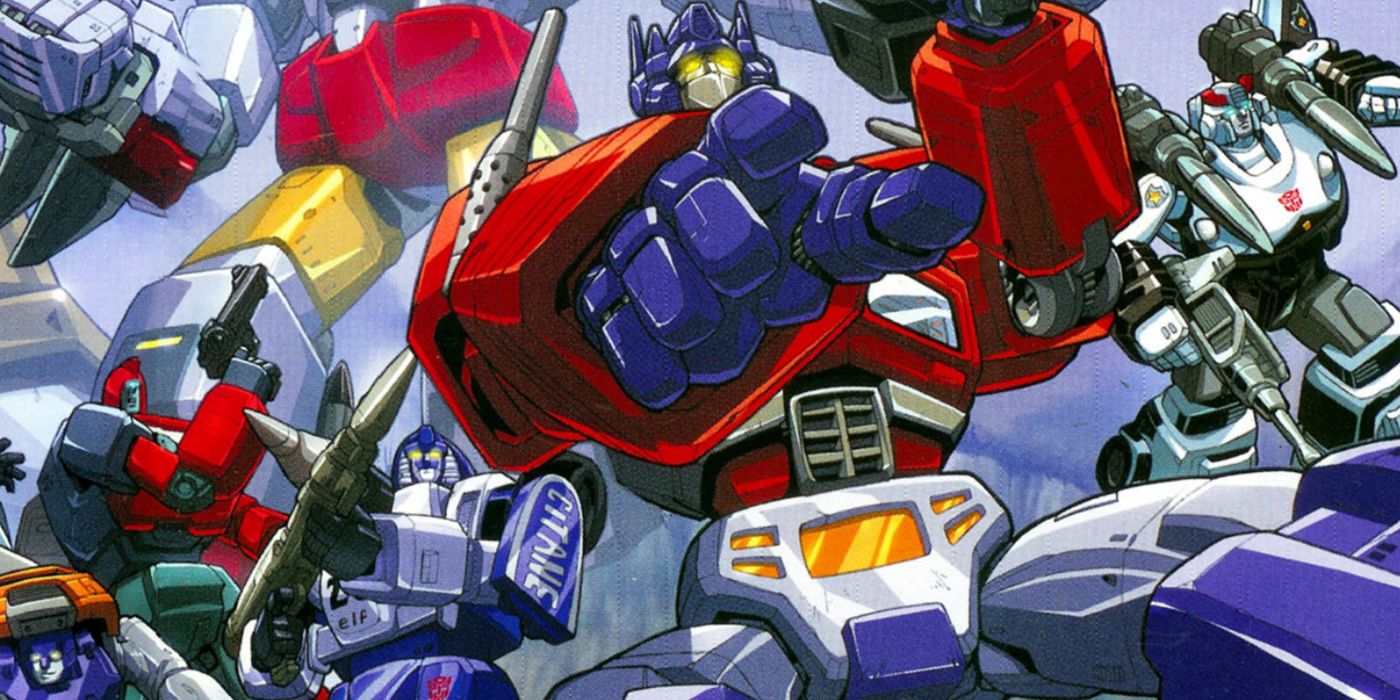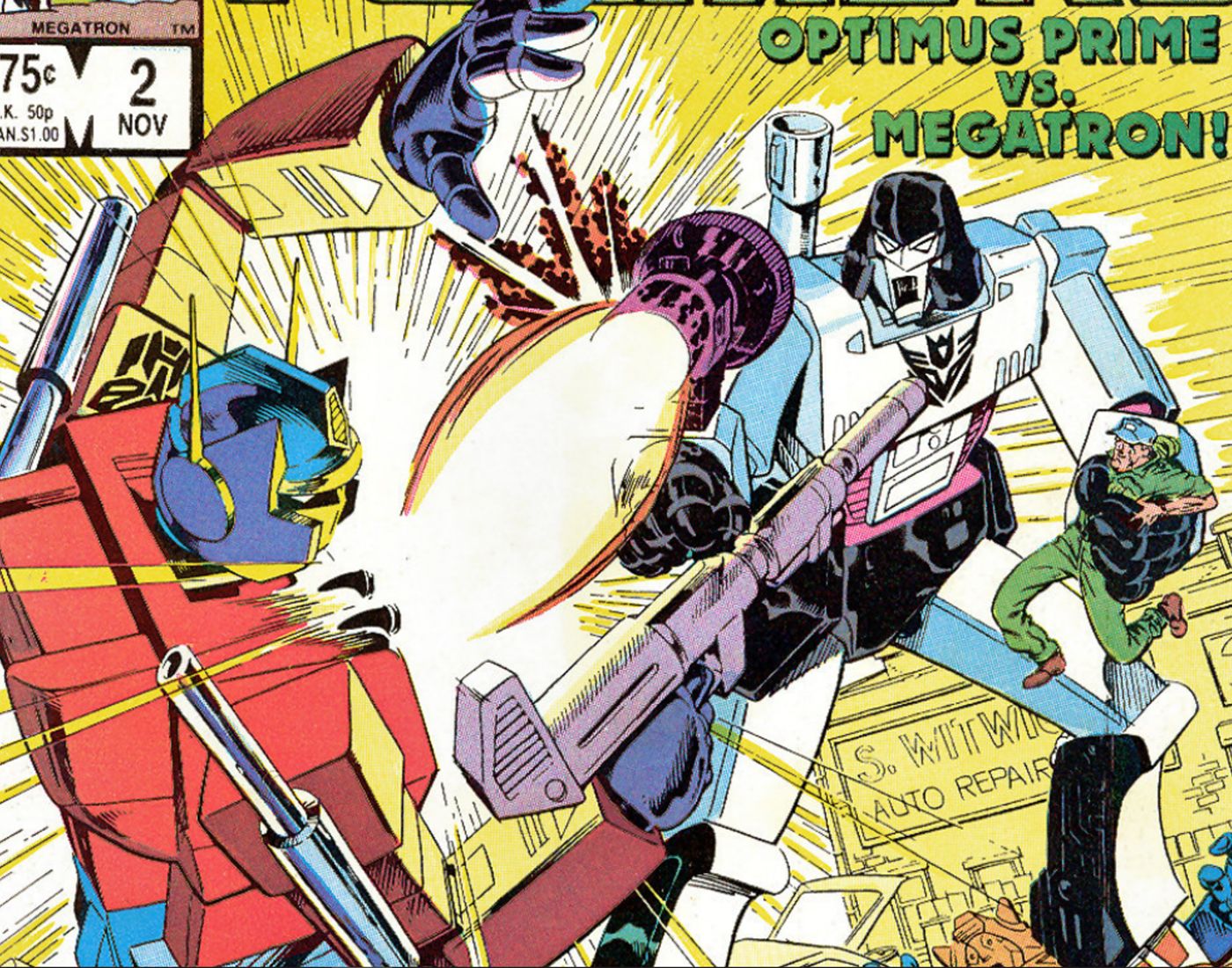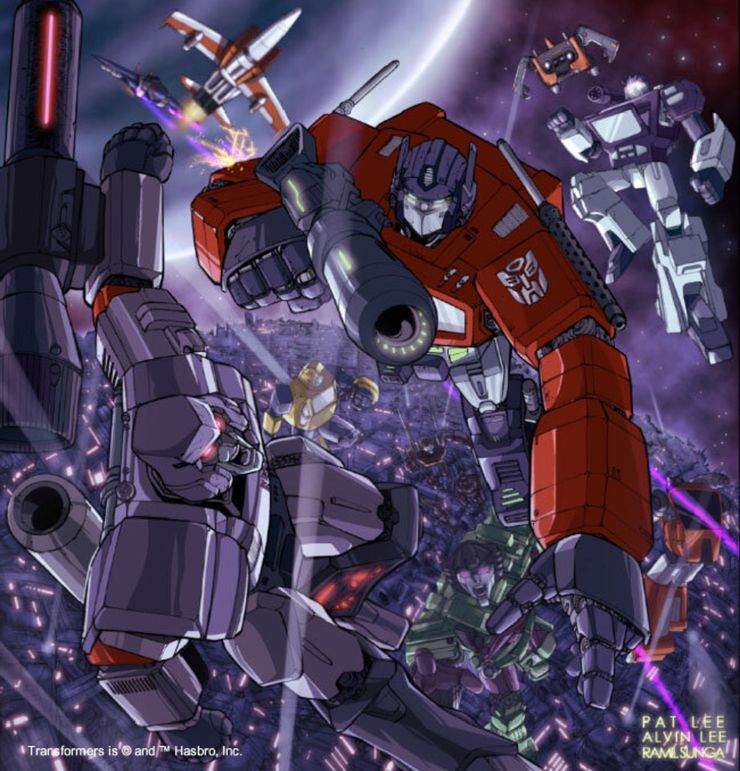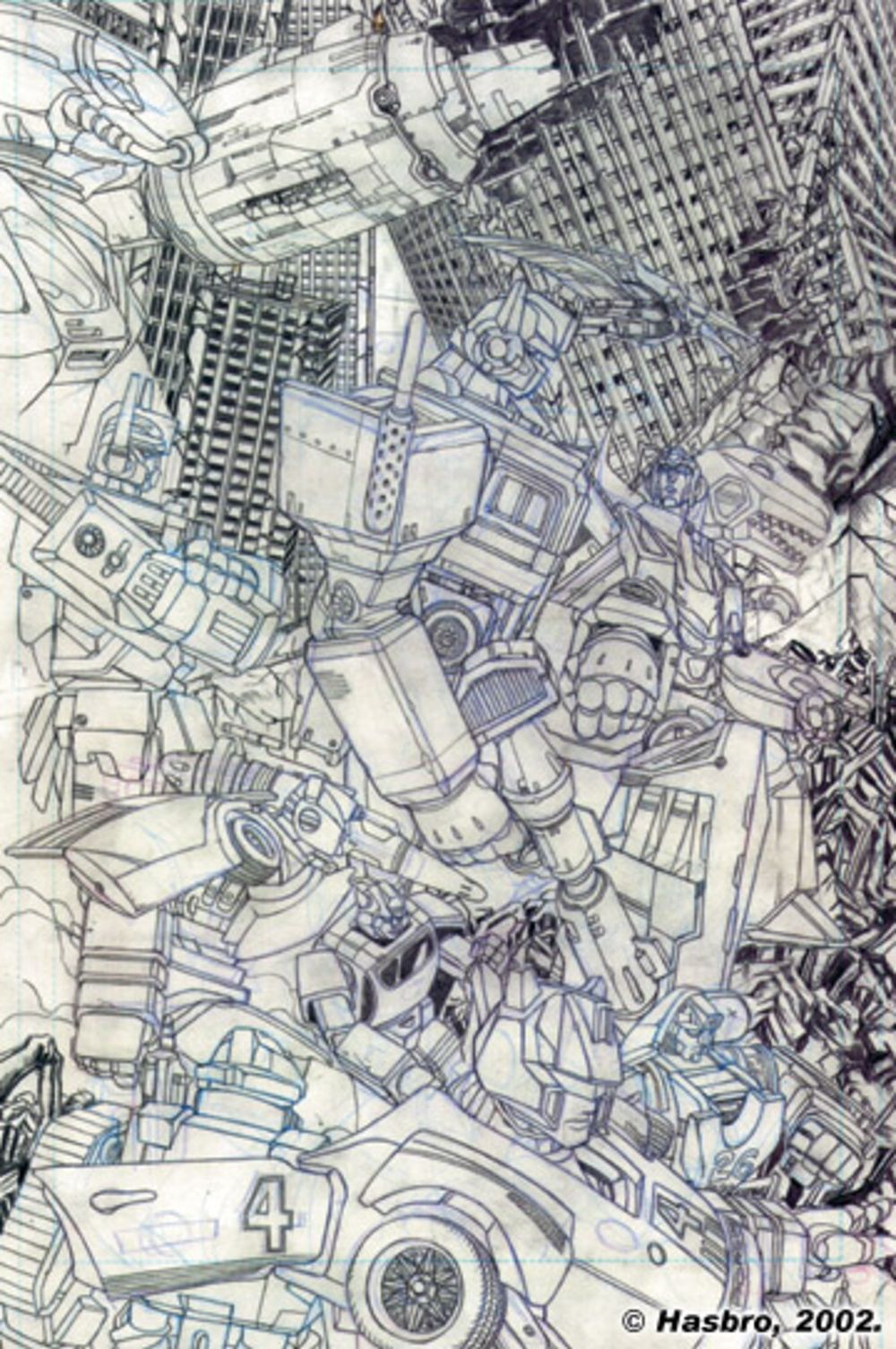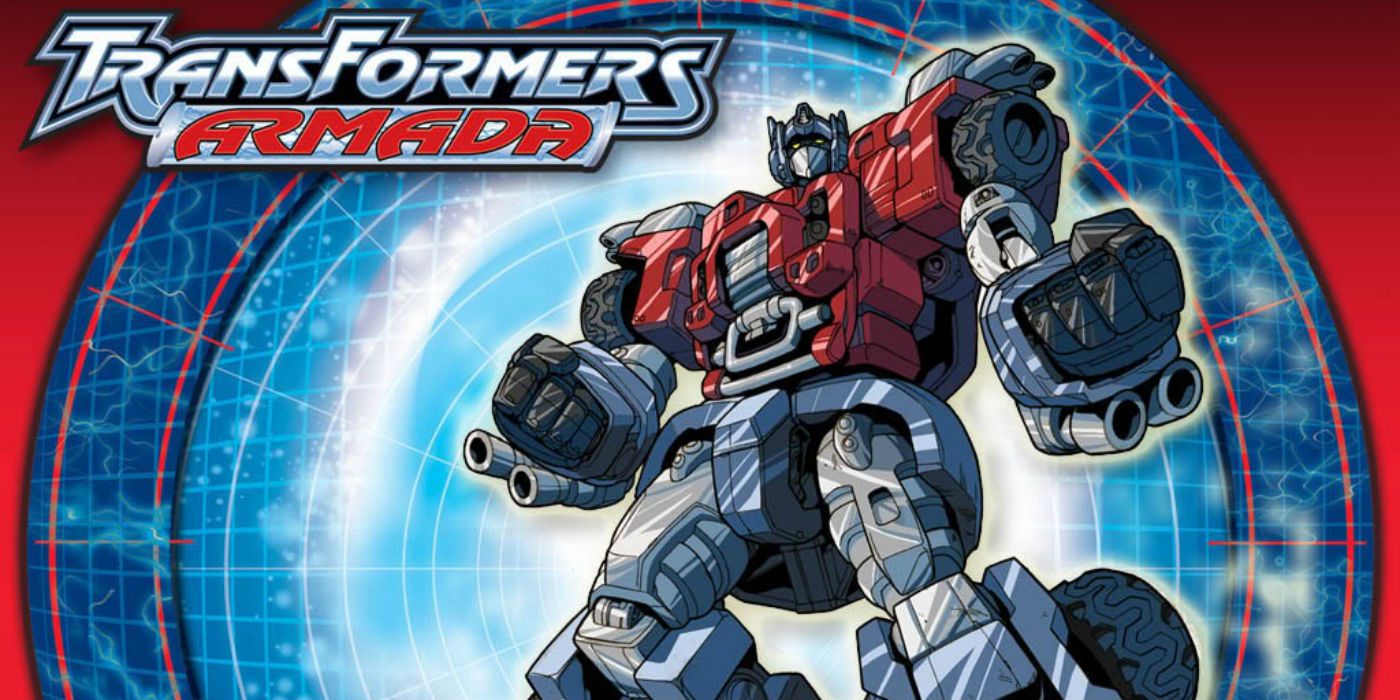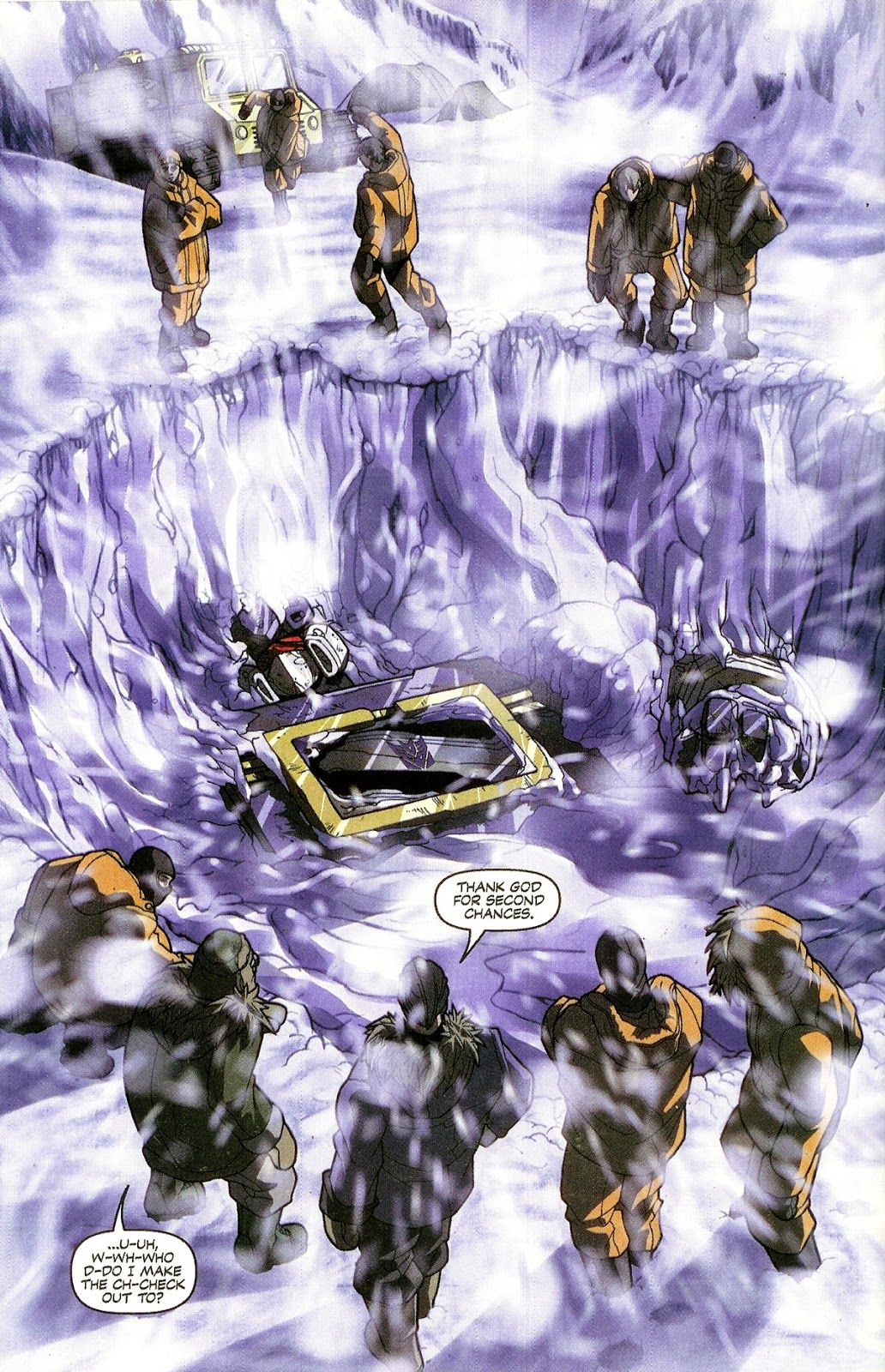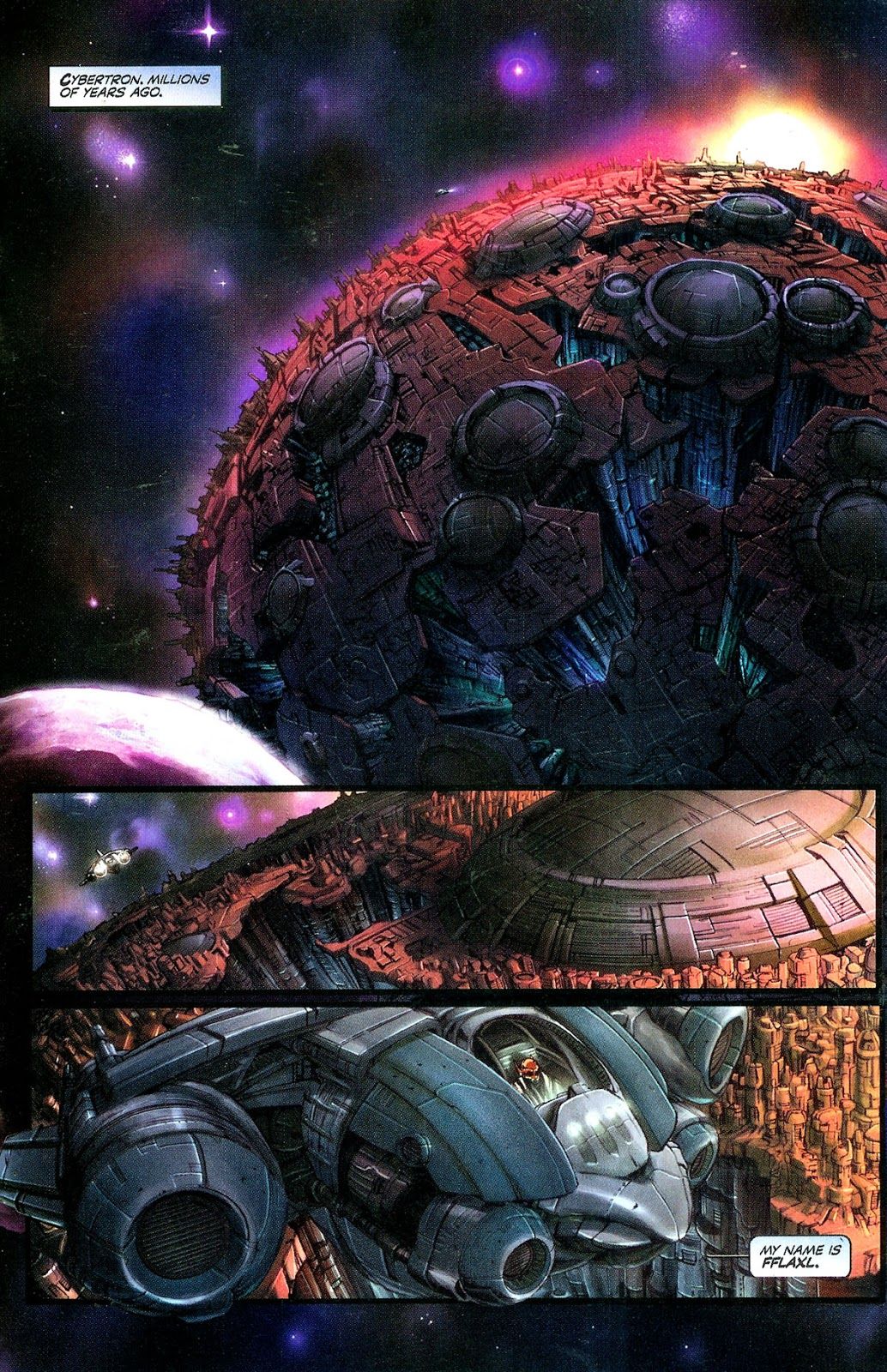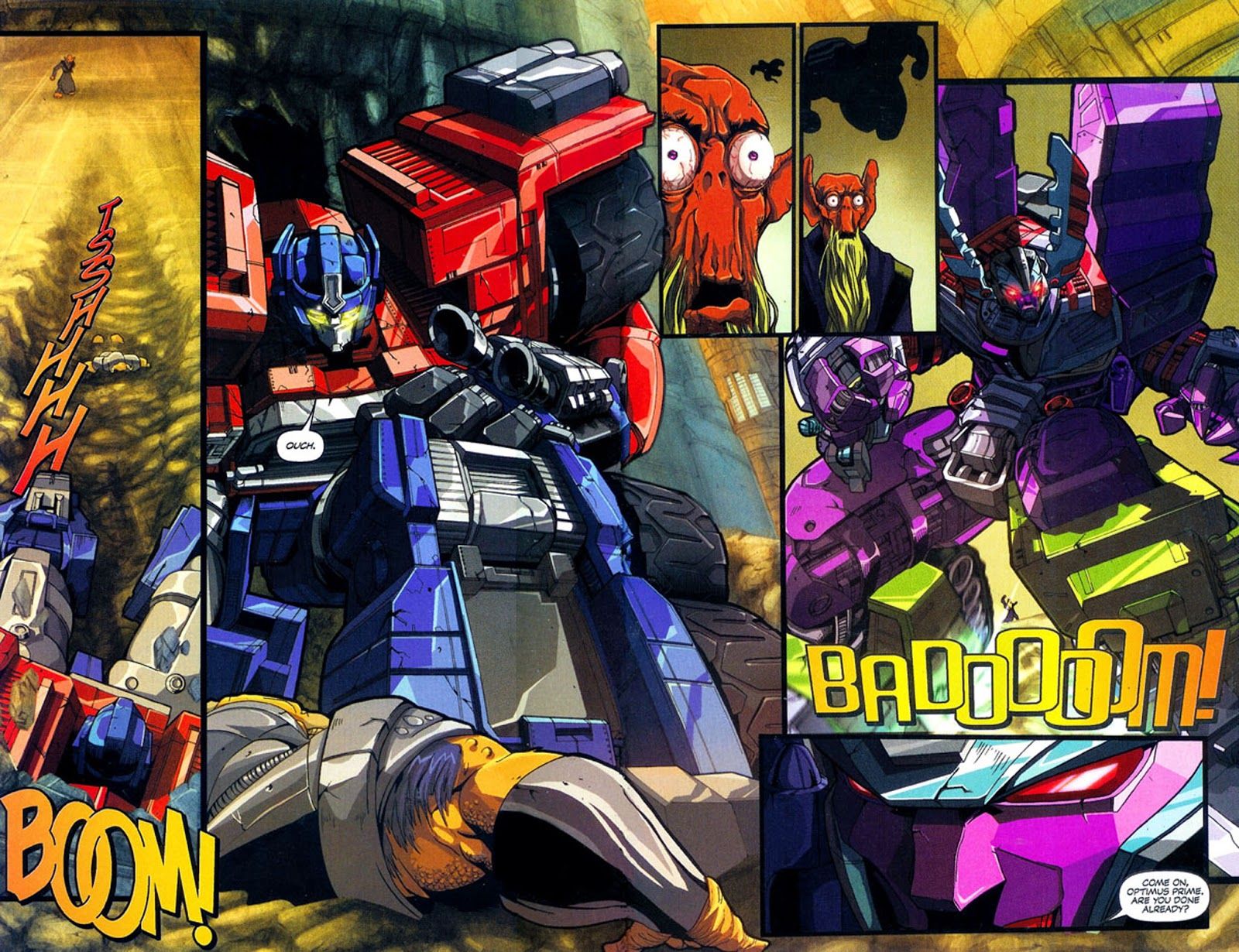Welcome to the fourth installment of Nostalgia Snake, a look at 2000s revivals of 1980s properties, revivals now so old they're also quite nostalgic. (Hence the snake of nostalgia eating itself.) This week, one of the most highly anticipated revivals -- the return of Hasbro's Transformers to comics. And if you have any suggestions for the future, let me hear them. Just contact me on Twitter.
The Transformers franchise's history with comics goes all the way back to its earliest days. In fact, the Transformers concept was introduced to comics fans before Hasbro even released the first action figure. Having found success partnering with Marvel Comics to promote its G.I. Joe: A Real American Hero line, Hasbro followed the same model when unveiling the Transformers. Having licensed the Diaclone and Micro Change toylines from Japanese toy company Takara, Hasbro turned to Marvel to develop a mythology for the toys, and a promotional comic book.
As Federal Communications Commission regulations were non-existent in regards to comic book commercials, a fully animated television ad was commissioned by Hasbro to advertise the first issue, which never mentioned Hasbro's name. (Toy commercials could only feature a certain number of seconds of animation, so the comics ads were used as backdoor toy advertisements.) Hasbro employees of the time report immediate calls from excited children who recognized the animation style from the earlier ads for the G.I. Joe comic. The art style was enough for them to understand this Marvel comic was also a Hasbro product.
Marvel's Transformers ran for 80 issues, from September 1984 to July 1991, telling the story of the heroic Autobots' battle against the evil Decepticons. Originally scheduled as a four-issue miniseries, fan response inspired Marvel to make the comic a monthly title. The international success of the brand, and the demands of a weekly release, meant the comics' U.K. sister title featured original stories spliced into the American narrative, running for 332 issues. While the concurrent animated series largely defined the public's perception of the Transformers, the comics contributed to the lore, especially in regards to the origins of the robotic species.
By 1990, the Transformers brand had cooled in America, and it temporarily disappeared as both a toy line and comic series. 1993 saw the release of Transformers: Generation 2, a short-lived revival toy line with accompanying Marvel comic. Neither set the world on fire. Writer Simon Furman saw the writing on the wall early, naming a new character "Jhiaxus" as a play on the phrase "gee, axe us,"which is exactly what happened a few issues later.
Hasbro would have far more success revamping the entire concept in 1996 as Beast Wars, a series with loose ties to the classic continuity that focused on transforming mammals, birds, fish, reptiles, and dinosaurs. After Beast Wars ran its course, Hasbro brought the Japanese animated series Transformers: Robots in Disguise to America in 2001 as a reboot of the classic Transformers. Known in Japan as Transformers: Car Robots, the dubbed anime didn't find much of an audience in America, ending after one season. And neither Beast Wars or Robots in Disguise found themselves attracting much attention from comics publishers. The market had shrunk greatly since the early 1990s, and the movement within the comics industry was to focus on older readers, not kids eager for more adventures starring their favorite action figures.
However, an adult's fondness for the toys of his youth can never be underestimated. The preeminent comic book fanzine of the day Wizard Magazine, which was staffed by Gen-Xers with true love for '80s properties, featured an article in its December 2000 issue speculating on what the hottest creators of the day could do with 1980s toy franchises. The staff commissioned popular artists to render their idealized versions of G. I. Joe, He-Man, Thundercats, and of course, the Transformers. For the Robots in Disguise, Wizard named Pat Lee of Dreamwave Productions as their choice for artist.
Dreamwave Productions was a Canadian art design studio and comic book publisher founded in 1996 by artist Pat Lee and his brother Roger Lee. In the late 1990s, their Image Comics series Darkminds became an unexpected hit by using cutting-edge digital coloring techniques to recreate the look of big-budget anime on a comic book page. Given that the most popular episodes of the original Transformers cartoon had heavy anime elements, and the franchise's deep ties to Japan, it's not surprising Dreamwave was viewed as the best choice to revamp a Transformers comic.
A few issues after Lee's initial Transformers piece, he contributed a feature called "How to Draw Mecha" for Wizard #118, which had him once again presenting his take on the Transformers.
The initial Wizard article created a stir within fandom, and within a year of its release, Image was releasing a revamped G. I. Joe series, produced by a small studio known as Devil's Due. New Marvel Editor-in-Chief Joe Quesada had previously stated his indifference towards publishing a new G. I. Joe comic, but the immediate success of Image's revamped series made it clear an audience existed for 1980s properties. Reportedly, every major comics publisher pitched Hasbro for a chance to revamp the Transformers. In the summer of 2001, Hasbro granted Dreamwave the license to create the first Transformers comics in years.
As Dreamwave was lobbying for the comics' rights, Hasbro already had plans to reboot the Transformers yet again as an action figure line and animated series. Transformers: Armada, known in Japan as Super Robot Life-Form Transformers: Legends of the Microns, was a dual production between Hasbro and its Japanese counterpart, Takara.
This new continuity for the Transformers was intended for both American and Japanese audiences, debuting first on Cartoon Network in 2002. Fans have charged Hasbro with rushing the early Armada episodes to air in America, resulting in several animation and dubbing mistakes. Armada was a hit, though, introducing the franchise to a new audience.
As a part of their deal to produce a classic, 1980s-inspired Transformers title, Dreamwave also agreed to create a series set in the Armada continuity. From Hasbro's perspective, Armada would be the main title, promoting the new toys, but fans with fond memories of the 1980s were anticipating Transformers: Generation 1.
Dreamwave introduced its take on the franchise with April 2002's Transformers Preview one-shot. (With the high-profile license in its back pocket, Dreamwave also took this as an opportunity to publish independently of Image.) Both monthly titles were teased with brief introductory sequences. Writer Chris Sarracini teamed with artist Pat Lee for a story that has two businessmen (one a nebbish dork and the other a detached mystery figure with a cool scar) trudging through the Arctic. The cool mystery figure is looking for investors to help fund his excavation, where he's discovered the frozen body of the Decepticon Soundwave.
The next story previews Armada, with another story by Chris Sarracini and art from James Raiz. Raiz has a text piece in the comic, explaining his past in technical illustration, which wasn't a great match for the anime-influenced house style of Dreamwave. Raiz assumed he'd remain as Dreamwave's background artist, rendering buildings and technology, but wouldn't be assigned as a regular artist. It was decided his style was a great match for the Transformers, though, leading Dreamwave to assign him Armada.
The opening page of the story showcases not only Raiz's technical skills, but also Dreamwave's remarkable coloring talent.
The story has an alien bureaucrat arriving on Cybertron to investigate this war between the Autobots and Decepticons. He literally finds himself caught in the middle of a battle between the Armada versions of Optimus Prime and Megatron.
Traumatized, the alien decides to leave this crazy planet alone to deal with its problems.
Both stories are quick teases, but are surprisingly sharp and entertaining in their own right. The rest of the comic consists of sketch pieces, giving readers some idea of how Dreamwave will handle the classic Transformers. Although its arguably a bit of a cash grab, but the production values here are undeniable. The average comic on the market just didn't look like this in 2002, and Dreamwave was primed to release a monster hit.
By the end of 2002, Dreamwave's Transformers books accounted for seven of Diamond Comics Distributors' top 20 selling comic books of the year. Dreamwave went on to publish more Transformers comics -- including one based on the Armada sequel Transformers: Energon -- until its 2005 bankruptcy, which led to the abrupt end of the series and left several stories unfinished.

